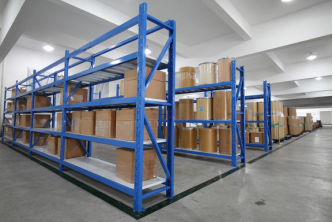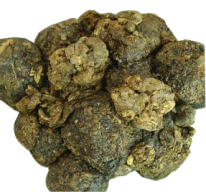Quality Inspection for Organic Propolis powder Factory in Albania
Quality Inspection for Organic Propolis powder Factory in Albania Detail:
[Products Name] Propolis powder, Propolis extract powder
[Specification]
Propolis content 60%,70%,80%
Water-soluble propolis powder 60%,70%,80%
[Gerneral feature]
1. Low antibiotics
2. Low PAHs, can approve to 76/769/EEC/German:LMBG;
3.Organic certified by ECOCERT, according to EOS & NOP organic standard;
4.Pure natural propolis;
5.High content of flavones;
6.Anti-block;
7. Manufacturer supply.


[Packaging]
1. 5kg/aluminum foil bag, 25kgs/carton.
[How to get it]
First, we collect raw propolis from beehives, then extract by low temperature with ethanol. Filter and concentrate, we get the pure propolis block at 98%. Then Low temperature crushing, adding edible and medicinal excipients, finally we get propolis powder.
[Introduction]
Propolis comes from the substance like natural resin, which is collected by the bees from exudates of plants branches and bud the chemical substances of Propolis are found to be various, such as beeswax, resin, incense lipids, aromatic oil, fat-soluble oils, pollen and other organic matter. Studies have shown that the source of propolis resin in material has three types: bees collected plants secreted fluid, secretion in vivo metabolism of bee, and involvement in the process of forming the material.
We can supply Propolis Extract with food-grade and medicine-grade .The raw materiall is came from non-polluting food grade propolis .Propolis extract was made of high-grade propolis. It maintains the propolis effective ingredients during the procedure of extraction under constant low temperature , taking off the useless substances and sterilization.
[Function]
Propolis is a natural product processed by bees mixed with glutinous and its secretion.
Propolis contains more than 20 kinds of useful flavonoids, rich vitamins, enzymes, amino acids and other microelements, etc. Propolis is called “purple gold” owing to its valued nutrients.
Propolis can remove free radical, lower blood sugar and blood fat, soften blood vessels, improve micro-circulation, enhance immunity, anti-bacteria and anti-cancer.
Product detail pictures:

Related Product Guide:
Which has a positive and progressive attitude to customer's desire, our corporation constantly improves our merchandise quality to satisfy the desires of consumers and further focuses on safety, reliability, environmental demands, and innovation of Quality Inspection for Organic Propolis powder Factory in Albania , The product will supply to all over the world, such as: Swiss, Detroit, Bangladesh, We have developed large markets in many countries, such as Europe and the United States, Eastern Europe and Eastern Asia. Meanwhile with the powerful predominance in persons with ability, strict production management and business concept.we constantly carry on self-innovation, technological innovation, managing innovation and business concept innovation. To follow the world markets fashion, new products are kept on researching and providing to guarantee our competitive advantage in styles, quality, price and service.
**********************************************************
ENZO MATCHA: https://www.amazon.com/gp/product/B01K2QHYU0
**********************************************************
ENZO STEVIA: https://www.amazon.com/gp/product/B01JZKUB5O
**********************************************************
ENZO STEVIA
Enzo’s Private Selection brings you one of the best organic sweeteners on the US market today, 320 Times Sweeter Than Sugar. Free from carbohydrates and calories Stevia Powder is a safer and healthier alternative to sugar and artificial sweeteners. It enables you to add more versatility to your menu as you can use it to sweeten a variety of foods and drinks.
✔ INTENSE SWEET TASTE::: Our Stevia Powder Is A Pure Natural Concentrate Which Means That its Taste Is Extremely Sweet. In Fact, It Is 320 Times Sweeter Than Various Sorts Of Sugar Or Artificial Sweeteners. Therefore You Would Need Only Need As Little As 1/34 Tsp To Add A Flavor To A Drink Or Food.
✔ NO HARMFUL CHEMICALS::: Raw Organic Stevia Extract with 0 Additives. The Product Is 100% Organic And Has NO Harmful Artificial Preservatives Such As Aspartame, Acesulfame Or Sucralose Which Can Still Be Found In Some Sweeteners Sold In Supermarkets.
✔ HEALTHY ALTERNATIVE TO SUGAR::: Enzo’ S Stevia Powder Can Please Your Taste Buds Without Harming Your Health. You Can It To Sweeter Many Kinds Of Meals And Drinks. What’s More, Thanks To Its Strong Fast It Will Last You For A Time.
✔ STRENGTHENS THE BODY::: Good News For Everyone With A Sweet Tooth. Finally, A Sweetener Which Protects The Health And Does Not Make You Put On Weight. Stevia Protects The Health Of Your Skin And Bones And Has A Positive Impact On Your Brain Function.
**STEVIA::: What is it & Why You Need This??
Stevia originates from South America where it has a long culinary tradition which has spread across the world. The extract is produced from an herb called Stevia Rebaudiana Bertoni, grown and processed using special methods which do not involve the use of chemicals, solvents or artificial enzymes.
**If you are a keen cook Stevia extract can soon become your favorite because it can be used for many different recipes. You may use it for baking your favorite cakes, sweetening teas or coffee or even add it to marinate to give it a more intense taste.
**BENEFITS OF ENZO STEVIA POWDER
Improves Skin and Bone Health
Stevia helps maintain the elasticity of the skin and thus increases it’s the resistance against a self-inflicted or external damage.
**Lowers Blood Sugar and Blood Pressure
Stevioside (one of the natural chemical compounds in stevia) copies the function of insulin, the hormone which regulates the level of sugar in the blood. Not only it can help reduce blood pressure and but also it keeps the blood sugar levels low. These benefits are very useful, especially for the patients with TYPE 2 DIABETES.
**High in Antioxidants
This pure organic sweetener contains a big number of antioxidants which are a natural protection against dangerous diseases.
**Prevents Memory Loss and Premature Aging
Stevia supports the brain function and helps maintain the circulation of blood in your brain. As a result, there is a lesser chance of developing memory loss or other issues.
**Zero Calorie
******************************************************
FAQs
*Any Aftertaste?
No, our extract has completely removed after tastes of stevia
*Is It Bitter?
No, Only If you use too much it becomes bittersweet
*What’s the Flavor?
Sugar, no flavor
*Can I Use It for Baking?
Yes, Absolutely – Our Stevia doesn’t Brown But It is Amazing for Mug Cakes, Brownies, and Short Cakes
*Does It Contain Dextrose, Silica, Insulin?
No
**How Much To Use?
1/34 a small Pinch for tea & Coffee
**Calories Compare to Sugar
0 Calorie
**Dissolve Instantly?
No, But Easily Dissolve When Stirred in Cold Or Hot Water
**How Do I Store It?
Cool Dark Place, Keep Out Of The Sun
**Shelf Life:
2 Years
************************************************
Chasen (Green Tea Whisk) + Small Scoop for preparing Matcha + Tea Spoon
https://www.amazon.com/dp/B002NH3BU4
Polysaccharides
We are long-term partners, there is no disappointment every time, we hope to maintain this friendship later!








